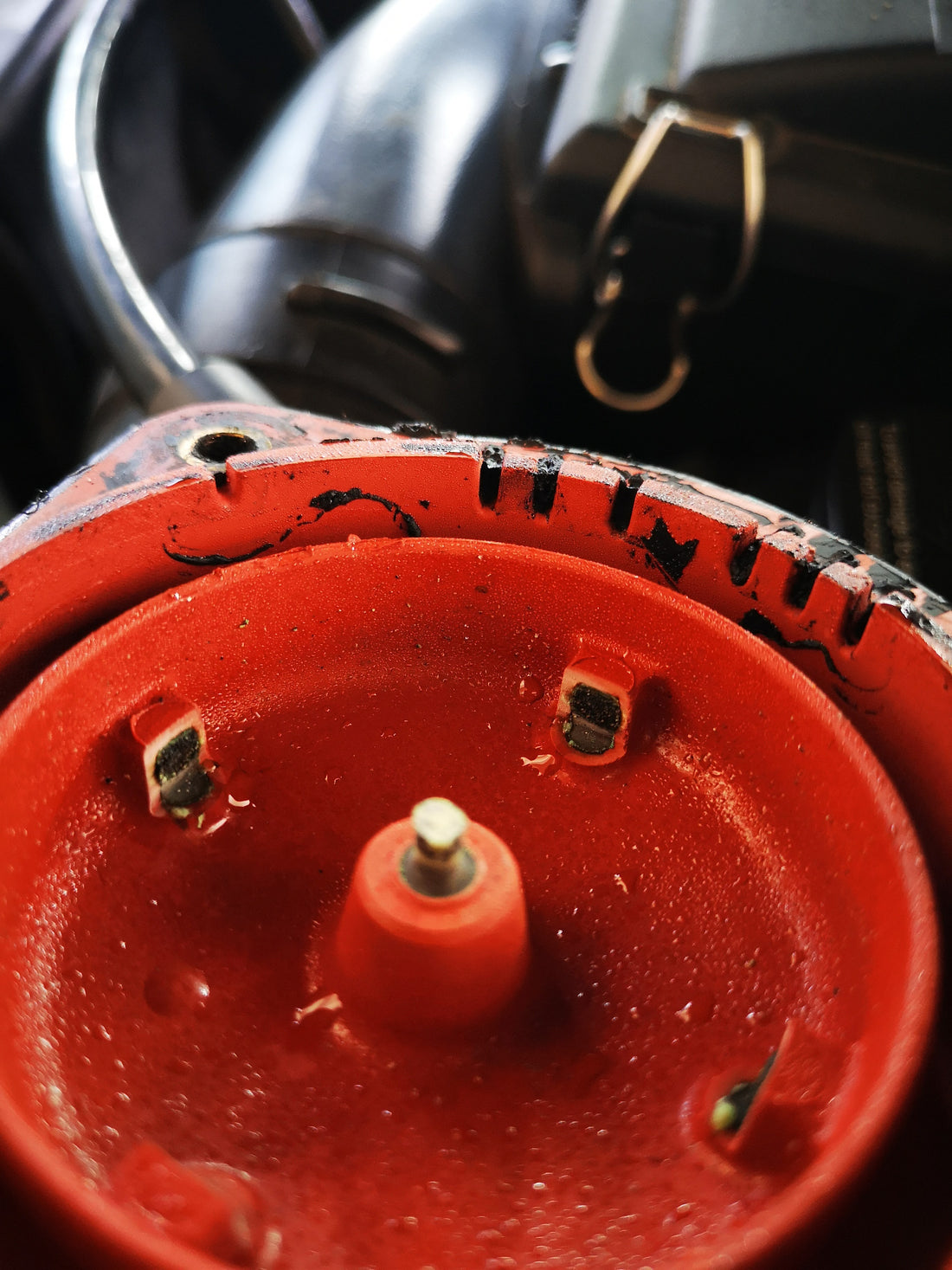Have you got a Mercedes that hesitates to startup after being parked up for a period of days or weeks? Is it especially difficult after wet weather?
Then the chances are, your engines ignition system has a fault - and this is exclusive to the early engines (pre-1996). This is because Mercedes didn't transition to coil on plug until after this date (mid 1995 to be precise).

(Image showing a 1992 M119)
Although the distributor ignition system was a proven and reliable design, it has it's shortfalls, especially on vehicles with limited maintenance history or where the system has been overlooked.
In this article I will talk about the most commonly overlooked maintenance items that can cause the majority of the cold start problems, as well as the stalling when warm and hard restarts.
The culprit isn't the entire ignition system, it's a single component that can be affected by other items and conditions.
The Distributor Cap.
The Distributor cap has been used in ignition systems since the beginning of automotive history, and it's been used widely due to its simplicity, cost effectiveness and reliability. That doesn't mean it doesn't have any pitfalls. I will list the design issues, and what can be done to negate them, helping to create a bulletproof maintenance schedule. This will result in the reliable operation of the system. When you understand how the system works, and the conditions required for optimum operation, this schedule will make sense.
The diagnosis
If you're reading this article, the chances are you've already experienced this issue, or you are experiencing them now with your car.
The first thing to do is to remove the cap from the vehicle. On the L6 engines (M103 and M104.980) the cap is usually held on with 3 cap head screws, and the caps are bolted to the front of the engine cylinder head. On the M119 engine, there is a distritor cap on each cylinder head, again 3 cap heads on each distributor cap.
On the M102 and pre 1982 L4 and L6 engines, it's mounted to a distributor rotor housing using 2 flathead or cross head screws. The M117 V8 and M116 V8 are similar to the pre-1982 engines as the rotor is driven via a gear and not the cams. These models are less susceptible to the issue highlighted here, however they must still be maintained.
Once the cap is removed, the contact points must be inspected for wear and corrosion, as well as inspection for moisture. If you find moisture, the issue is obvious.
If you find no signs of corrosion, wear, or moisture, does the cap look uniform in colour? If it looks yellow, it might still have issues.


If your cap looks new, and the rotor looks clean, the issue may not be ignition related, and you must look at the spark plugs for a better insight. This scenario would lead to further diagnostics, and we are not discussing that in this section - I will post a separate blog for that, as it gets lengthy.
You see, for the ignition system to operate correctly, the distributor cap and rotor must be operating in a moisture free environment. When moisture is present inside the working system, the spark erodes the ignition contact points away, and the process of corrosion sets in when the system is resting. Moisture also creates a barrier between the point and rotor arm, leading to an unstable spark.
Once the contacts are corroded enough, the spark has a very hard time jumping between the rotor and the contact point. This is when the symptoms of weak spark start to show and we get a missfire or non start.
The solution
If your distributor cap has evidence of moisture or corrosion, it will need to be cleaned (temporary solution, but a good indicator to prove the issue) or it will need to be replaced.
I would recommend the replacement of the following components (on relavant engines) during this time:
M103, M119, early M120, early M104:
Distributor cap and rotor, sealing ring, insulation cap, camshaft sealing ring, rotor carrier bolt.
M110 and all earlier inline 6, M102 and all earlier inline 4 and 5, M117, M116 and all earlier V8:
Distributor cap, rotor, sealing ring.
The cause
If you notice, the M103, M119, early M120 and the early M104 all have more components to replace. This is because they are mounted to the cylinder head, and are driven by the camshaft. The camshaft seals are almost never replaced unless there is a big leak, and this is one of the major problems relating to the ignition failure. The camshaft seal starts venting oil gasses long before failing completely and this shows as moisture in the caps. If these components are all done at the same time, you can rest assured that you will have a much more reliable service life of the distributor caps and ignition system.

Good practice
Whilst servicing the distributor cap, it makes sense to change the spark plugs. Make sure to use the correct, non resistor type plugs. If you find someone has installed anything else, such as platinum multi tip plugs, this would also be causing issues with your engine.
We have noticed some vehicle arrive into our workshop where the distributor caps have been sealed to the cylinder heads using an RTV silicone. Although this may seem like a good idea to help reduce moisture in the caps, this is the opposite to what effect it has! The cap has 3 slots at the bottom and the sole purpose of these vents is to expell any gasses that get trapped during the heat and cooldown cycles of the engine. Sealing them up only leads to excess moisture and more problems and more cleaning. Please avoid doing this. A successful modification that can be implemented to the distribution cap is to cut additional vents on the opposite end of the cap (opposite to the ones already present). This ensures all vapour is vented away both downwards and upwards.

